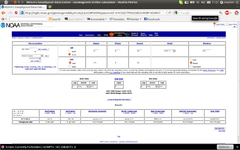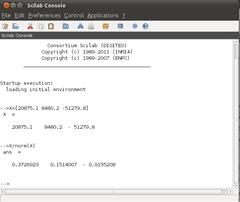Difference between revisions of "Subsystem/ahrs"
Jump to navigation
Jump to search
m (Subsystems/ahrs moved to Subsystem/ahrs) |
(add info about mag vector for int_cmpl_quat) |
||
| Line 13: | Line 13: | ||
There is a test program ( sw/airborne/test/ahrs/compare_ahrs.py ) to compare different AHRS implementations on simple test cases. | There is a test program ( sw/airborne/test/ahrs/compare_ahrs.py ) to compare different AHRS implementations on simple test cases. | ||
Other flags of interest are: | |||
*AHRS_PROPAGATE_LOW_PASS_RATES : apply a low pass filter on rotational velocity | |||
*AHRS_MAG_UPDATE_YAW_ONLY : use mag to update yaw only | |||
=== Complementary Euler (fixed point) === | === Complementary Euler (fixed point) === | ||
| Line 26: | Line 32: | ||
</firmware> | </firmware> | ||
<section name="AHRS" prefix="AHRS_"> | |||
<define name="H_X" value=" 0.51562740288882"/> | <define name="H_X" value=" 0.51562740288882"/> | ||
<define name="H_Y" value="-0.05707735220832"/> | <define name="H_Y" value="-0.05707735220832"/> | ||
| Line 35: | Line 40: | ||
}} | }} | ||
To calculate the normalised local magnetic field insert the relevant location coordinates [http://www.ngdc.noaa.gov/geomagmodels/IGRFWMM.jsp here]and calculate. | |||
Screenshot of noaa page. | |||
[[Image:Noaa_mag_data.png|240px]] | |||
Copy the north(x),east(y),vertical(z) component values into scilab and execute "X/norm(X)". | |||
Screenshot of scilab page. | |||
[[Image:Normalised_mag_fields.png|240px]] | |||
=== DCM (floating point) === | === DCM (floating point) === | ||
Revision as of 07:20, 24 November 2011
AHRS subsystem
The AHRS subsystem specifies which attitude estimation filter you are using.
e.g. for the complementary filter:
| File: conf/airframes/myplane.xml |
<firmware name="fixedwing or rotorcraft">
...
<subsystem name="ahrs" type="int_cmpl_euler"/>
</firmware>
|
There is a test program ( sw/airborne/test/ahrs/compare_ahrs.py ) to compare different AHRS implementations on simple test cases.
Other flags of interest are:
- AHRS_PROPAGATE_LOW_PASS_RATES : apply a low pass filter on rotational velocity
- AHRS_MAG_UPDATE_YAW_ONLY : use mag to update yaw only
Complementary Euler (fixed point)
Complementary Quaternion (fixed point)
For the latest integer complementary quaternion filter (int_cmpl_quat):
| File: conf/airframes/myplane.xml |
<firmware name="rotorcraft">
...
<subsystem name="ahrs" type="int_cmpl_quat"/>
</firmware>
<section name="AHRS" prefix="AHRS_">
<define name="H_X" value=" 0.51562740288882"/>
<define name="H_Y" value="-0.05707735220832"/>
<define name="H_Z" value=" 0.85490967783446"/>
</section>
|
To calculate the normalised local magnetic field insert the relevant location coordinates hereand calculate.
Copy the north(x),east(y),vertical(z) component values into scilab and execute "X/norm(X)".

